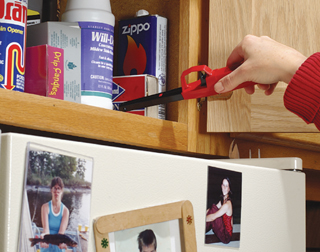No. 27
Prevent home fires
Avoid a few common mistakes to drastically reduce your risk
Most fires are caused by ordinary things like stove burners, candles and space heaters. Combine these things with a moment of carelessness and you’ve got a deadly disaster. But prevention is just as easy.
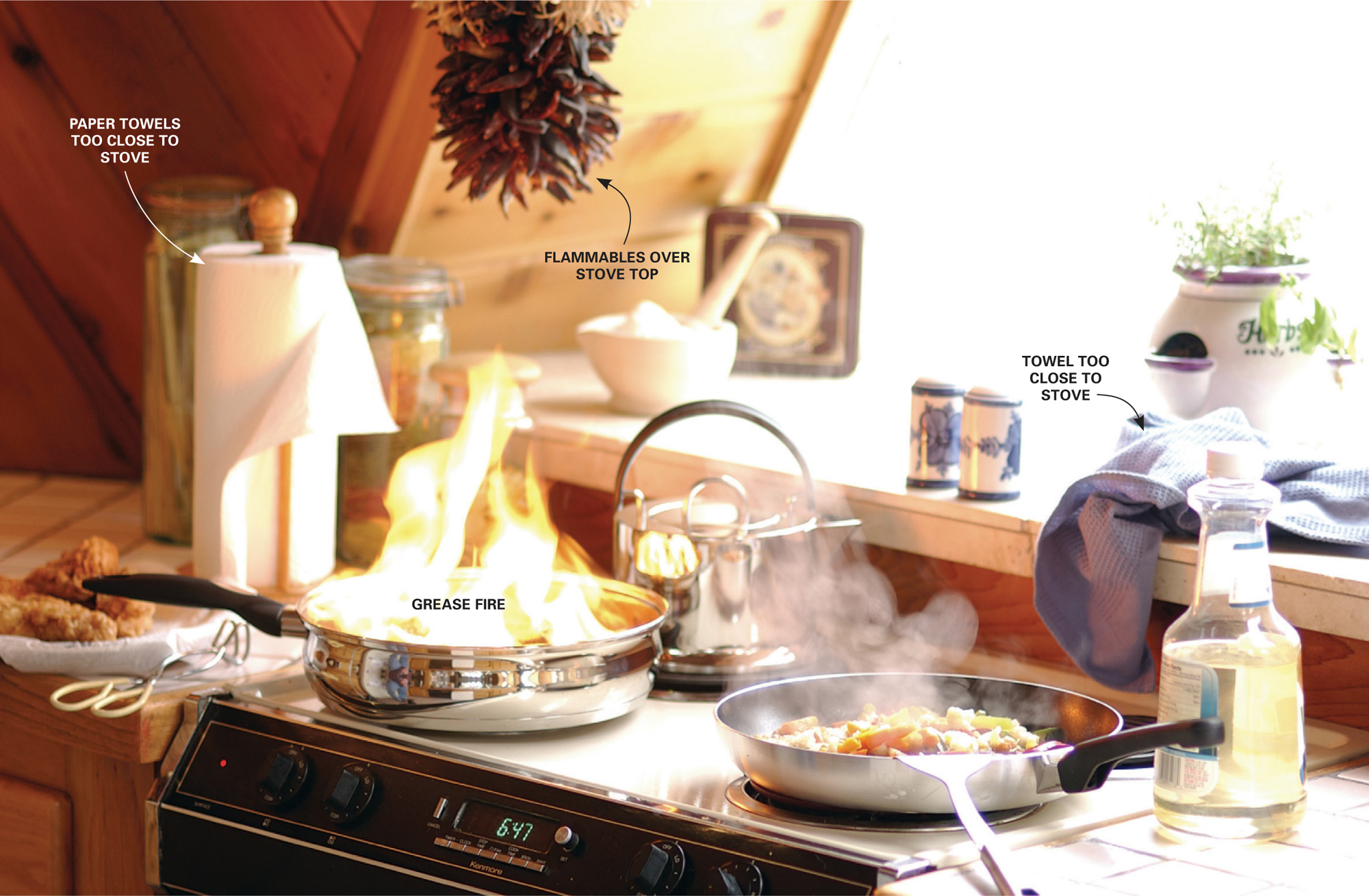
Cooking fires
They mostly occur on the cooktop, usually in the first 15 minutes of cooking. A common scenario is the grease in an unattended frying pan catches on fire and ignites nearby combustibles, which in turn ignite curtains, cabinets or anything else in the vicinity.
23% of fires, 9% of deaths are caused by cooking
Prevention:
• Never leave the kitchen while something is cooking on the stove.
• Keep combustibles at least 3 ft. away from the cooktop. This includes curtains and wall hangings.
• If a fire starts, slip a lid over the flames. Don’t carry the pan outside; many grease fires become full-scale house fires when a pan is carried through the house, dripping a flaming grease trail all the way to the door.
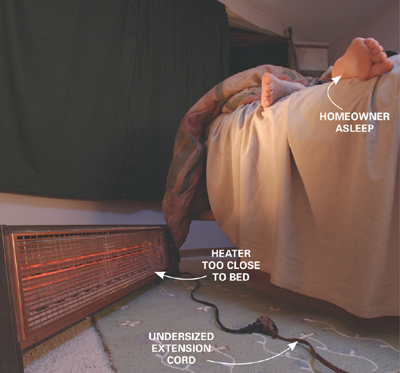
Heating equipment
Most deaths occur when wood stoves and space heaters are in use and ignite nearby combustibles while everyone’s asleep. Wood stoves also cause fires when embers in discarded ashes smolder and ignite other trash. Creosote buildup and sparks can cause a chimney fire that ignites combustibles located too close to a wood stove.
15% of fires, 13% of deaths are caused by heaters
Prevention:
• Keep space heaters at least 5 ft. away from drapes, bedding and other flammables.
• Plug space heaters directly into outlets, not into extension cords.
• Don’t use space heaters while sleeping.
• Empty wood-stove ashes in a metal container and store them outside away from combustibles for at least a week before dumping them into the trash.
• Have your chimney inspected and cleaned every year.
• Keep any and all combustible objects at least 5 ft. away from the stove or fireplace.
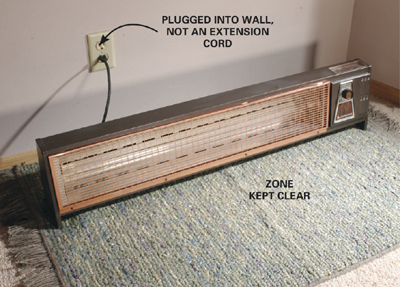
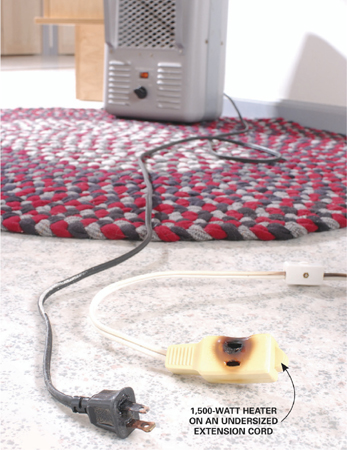
Electrical equipment
Electricity and heat caused by overloaded extension cords, hidden electrical shorts, bad connections and oversized bulbs in fixtures can ignite nearby combustibles such as wood framing, rugs or even the insulation around the cord or wire. Here are telltale clues that can tip you off to dangerous concealed wiring hazards:
• Electrical cords that are warm to the touch can signal overloading.
• Charred or plastic burning odors may indicate oversized bulbs and light fixtures.
• Warm switch or receptacle plate covers may mean a poor electrical connection.
• Frequently tripping circuit breakers may be caused by a defective breaker or possibly a short in the cables buried in walls or ceilings.
9% of fires, 10% of deaths are caused by electrical equipment
Prevention:
• Replace extension cords that are undersized or frayed.
• Never run extension cords under rugs.
• Replace undersized cords with larger-gauge ones or plug appliances directly into outlets.
• Call an electrician to track down hidden problems causing frequently tripping circuit breakers.
• Call an electrician to open up and troubleshoot electrical boxes that have warm covers.
• Check all the lightbulbs in your home to make sure bulb wattages don’t exceed the fixture’s recommended maximum.
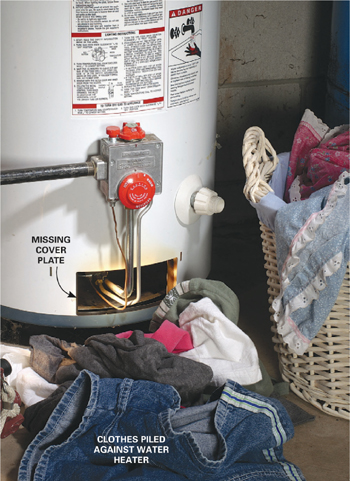
Appliances
The biggest culprits are lint buildup in dryers and combustibles near gas water heaters. Since water heaters are often in the same room as the laundry, clothes tend to get piled up against the water heater near the flame. The problem is worse when that flimsy cover plate falls off the burner access. Dryer vents catch on fire when built-up dust and lint ignite from either the burners or the heating elements and create a fire path to built-up lint within the vent hose. Especially dangerous are dryers that are vented with flexible vinyl hoses. The vinyl then catches on fire and lights anything near it.
7% of fires, 4% of deaths are caused by appliances
Prevention:
• Make sure the water heater cover plate is in place.
• Replace vinyl dryer vent lines with smooth-walled metal ducts.
• Mark a “combustible-free” zone 3 ft. away from your water heater with masking tape.
• Clean lint out of dryers.
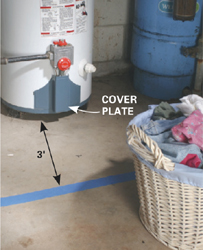
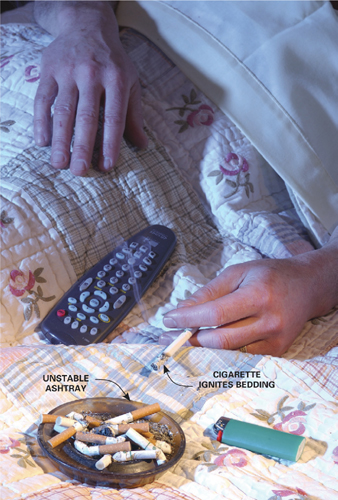
Smoking
Smoking kills more people than any other cause of fire because the fires usually start when everyone’s asleep. If a cigarette smolders in the bedding or drops on the carpet when the smoker falls asleep, the gases from smoldering fabrics will actually lull the smoker into a deeper sleep. Live butts that fall between cushions or are tossed into trash cans can take hours to ignite, and when they finally do, everyone is in bed asleep.
5% of home fires, 23% of deaths are caused by smoking
Prevention:
• Don’t smoke in bed.
• Use large ashtrays on tables.
• Douse ashtrays under the faucet before throwing butts in the trash.
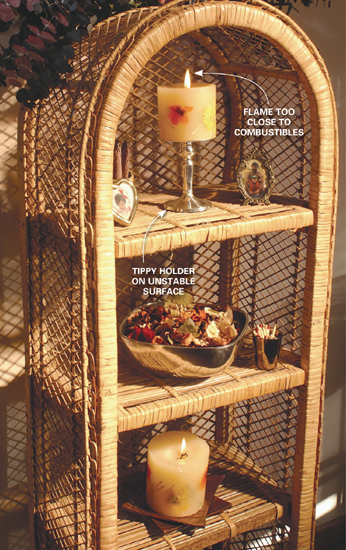
Candles
Like cooking fires, most candle fires occur when candles burn unattended near combustibles—usually in bedrooms. Using candles safely calls for attention and care. They’ll often get soft and fall out of a holder and ignite nearby combustibles or even ignite an underlying wooden holder or shelf.
5% of fires, 3% of deaths are caused by candles
Prevention:
• Use only tip-proof containers.
• Burn candles only while you’re awake and in the same room with them.
• Keep candles at least 3 ft. away from combustibles.
• Never burn candles that have combustibles (flowers, leaves and potpourri) cast into the wax.
• Don’t use candles during a blackout. Use LED flashlights and lanterns instead.
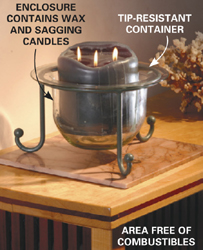
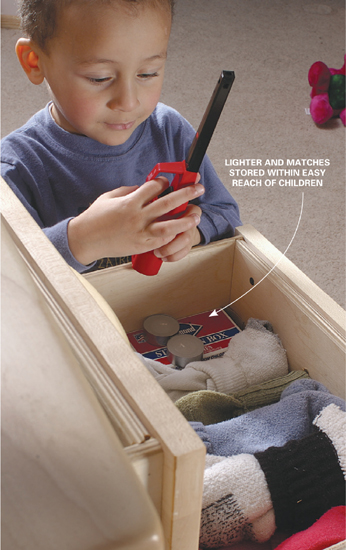
Playing with fire
Children often start fires while hiding in places like closets or under beds, where they’re surrounded by combustibles. Their first reaction is often to hide from you or the fire after it starts. There, they become overcome by smoke and/or make it difficult for firefighters to find them. It’s obvious that you shouldn’t leave matches and lighters lying around, but you also have to be vigilant around burning candles.
5% of fires, 8% of deaths are caused by children
Prevention:
• Store matches and lighters up high, well out of the reach of children.
